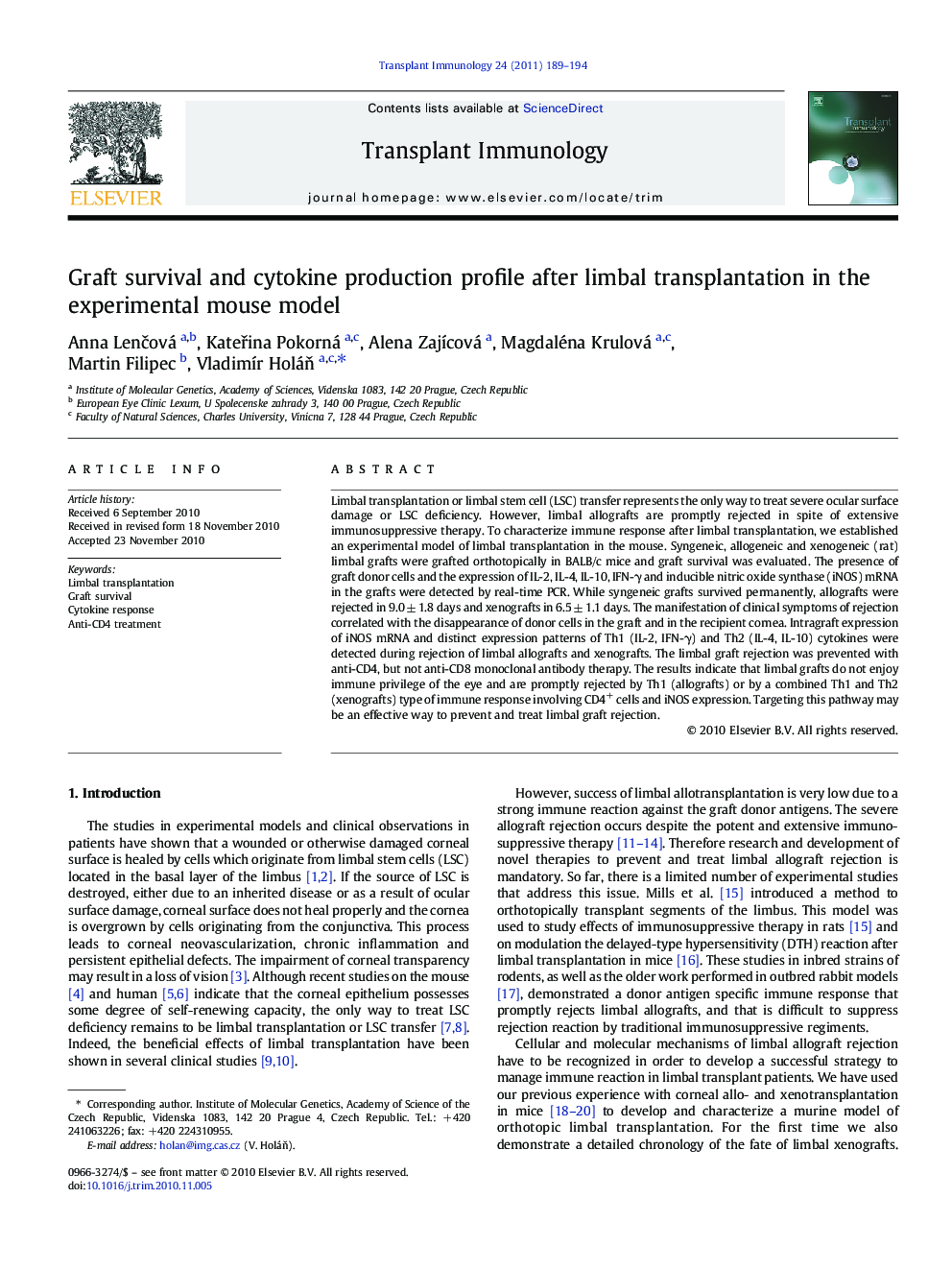| Article ID | Journal | Published Year | Pages | File Type |
|---|---|---|---|---|
| 3392206 | Transplant Immunology | 2011 | 6 Pages |
Limbal transplantation or limbal stem cell (LSC) transfer represents the only way to treat severe ocular surface damage or LSC deficiency. However, limbal allografts are promptly rejected in spite of extensive immunosuppressive therapy. To characterize immune response after limbal transplantation, we established an experimental model of limbal transplantation in the mouse. Syngeneic, allogeneic and xenogeneic (rat) limbal grafts were grafted orthotopically in BALB/c mice and graft survival was evaluated. The presence of graft donor cells and the expression of IL-2, IL-4, IL-10, IFN-γ and inducible nitric oxide synthase (iNOS) mRNA in the grafts were detected by real-time PCR. While syngeneic grafts survived permanently, allografts were rejected in 9.0 ± 1.8 days and xenografts in 6.5 ± 1.1 days. The manifestation of clinical symptoms of rejection correlated with the disappearance of donor cells in the graft and in the recipient cornea. Intragraft expression of iNOS mRNA and distinct expression patterns of Th1 (IL-2, IFN-γ) and Th2 (IL-4, IL-10) cytokines were detected during rejection of limbal allografts and xenografts. The limbal graft rejection was prevented with anti-CD4, but not anti-CD8 monoclonal antibody therapy. The results indicate that limbal grafts do not enjoy immune privilege of the eye and are promptly rejected by Th1 (allografts) or by a combined Th1 and Th2 (xenografts) type of immune response involving CD4+ cells and iNOS expression. Targeting this pathway may be an effective way to prevent and treat limbal graft rejection.
